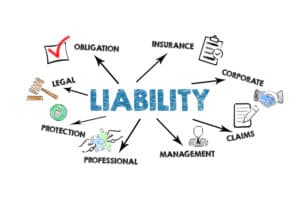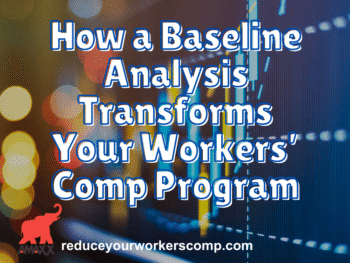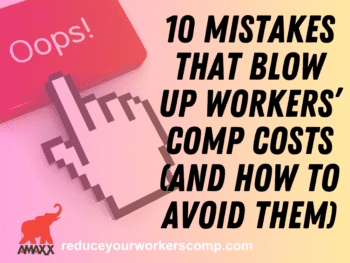
What should not be lost in the process is directing empathy and compassion to the injured employee. Taking the extra time to give respect will pay dividends and reduce workers’ compensation program costs.
This post is one in a 5-part series:
- Part 1 of 5: Work Comp and the Grand Bargain- A Primer
- Part 2 of 5: Work Comp and the Grand Bargain – Understanding Work Comp Insurance
- Part 3 of 5: Work Comp and the Grand Bargain – Primary Liability and Compensability
- Part 4 of 5: Work Comp and the Grand Bargain – Tips for Stakeholders to Reduce Premiums & Costs
- Park 5 of 5: Work Comp and the Grand Bargain: Dealing with the Unexpected
Work Injury – Now What?
It has long been the standard that all injuries occurring are compensation if they “arise out” and occur in the “course of” employment. These issues are fact-dependent and require cooperation and coordination between all interested stakeholders.
- Arising out of: Many courts have interpreted the test’s first prong to require evidence of a causal connection between the injury and the employment. Simply stated, the injury must occur during the work activity or furtherance of the employer’s interests.
The underlying analysis for this prong is the concept of “risk.” Courts have used many terms with different meanings when analyzing this concept. This has included terms of art such as “positional risk,” “street risk,” “incidental risk,” “increased risk,” “heightened risk,” and “hazards peculiar to employment.”
For jurisdictions that lean toward a “positional risk,” courts tend to examine the circumstances where the work activities put the employee in a position to sustain the work injury – a true balance test. On the other hand, those jurisdictions that follow an “increased risk” standard tend to conduct a rigid analysis of elements within the work environment that contributed to the incident.
- In the course: The longstanding interpretation of this prog requires that the injury occur within the time and space boundaries of employment.
The modern workplace has required courts to examine factors not found in the traditional 9 to 5 industrial workplace. Issues involving workplace ingress and egress, traveling employees, and working from home are some of the many factors that need to be considered. The rise of idiopathic injuries also compounds this. These injuries occur for unexplained reasons, such as someone walking down a hallway or using stairs.
Click Link to Access Free PDF Download
“Avoid the 3 Primary Reasons Injured Workers’ Hire Attorneys”
Addressing compensability issues is driven by facts and the ability of defense stakeholders to obtain accurate and complete information.
Addressing Statutory Presumptions
Many workers’ compensation laws have statory presumptions for various workers’ injuries. Common professions that have these presumptions include:
- Police officers;
- Firefighters;
- Emergency Medical Services (EMS) staff; and
- Doctors, nurses, and other health care professionals.
Statutory presumptions shift the burden of proof instead of forcing the employee to prove their claim. The defense interests are required to prove the injury or condition is not work-related. Common incidents that give rise to these presumptions include heart attacks, various forms of cancer, and other ailments such as COVID-19. Claim handlers must be aware of these presumptions and what is required to rebut them.
Employer representatives are sometimes hesitant to report work injuries. The fear of rising insurance premiums and adverse claims history mainly drives this. Members of the claim management team must proactively educate their insureds and employer representatives on why it is essential to report all work injuries. The bottom line is reporting timely claims saves money and reduces program costs.
- Employers are required to report all work injuries under state law;
- Reporting work injuries helps preserve evidence and allows for the identification of witnesses; and
- Allows all interested stakeholders to get better results and build workplace morale.
Insurance carriers can assist their insureds by creating user-friendly injury reporting systems that use web and app-based technology. Other perks, such as telephone nurse triage services, can support employers and other interested stakeholders.
Conclusions
Issues concerning primary liability can consume significant time for claim team members. Knowing and understanding the law is essential to this process and, when mastered, will allow the individual claim handler to make better decisions. Denials should never be taken lightly and always be done in good faith. Better decisions can be made when insurance carriers invest in tools to allow timely reporting of work injuries, which will drive program efficiency.

Contact: mstack@reduceyourworkerscomp.com.
Workers’ Comp Roundup Blog: http://blog.reduceyourworkerscomp.com/
Injury Management Results (IMR) Software: https://imrsoftware.com/
©2024 Amaxx LLC. All rights reserved under International Copyright Law.
Do not use this information without independent verification. All state laws vary. You should consult with your insurance broker, attorney, or qualified professional.














